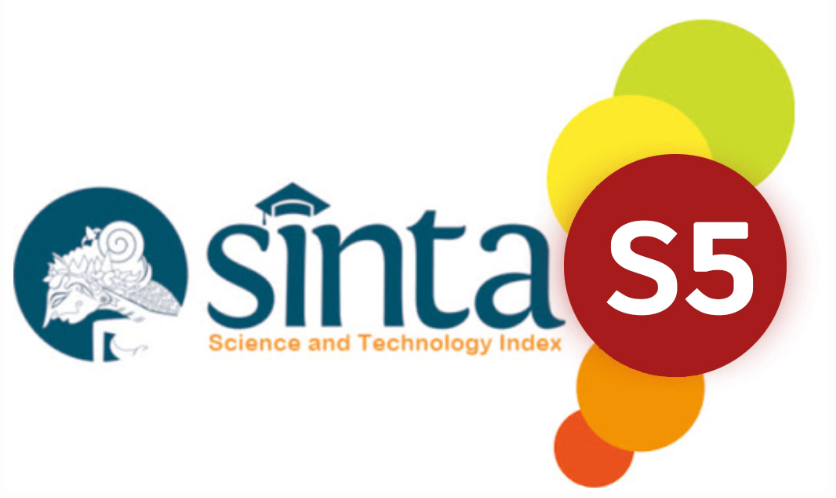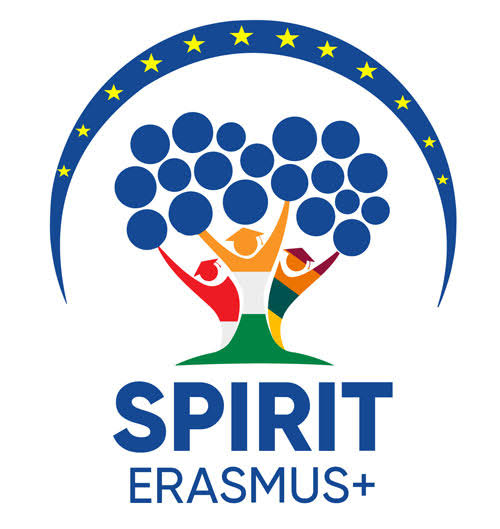Protein Programmed Death-Ligand 1 Expression in Non-Small Cell Lung Cancer (NSCLC) and Its Correlation to Smoking Status in North Sumatera Population
DOI:
https://doi.org/10.32734/sumej.v7i2.15289Keywords:
non-small cell lung cancer (nsclc), programmed death ligand (pd-l1), smoking status, tumour proportion scoreAbstract
Background: Tobacco smoking is associated to the increase risk of lung cancer, and smoking could also trigger the tumour proportion score from programmed death ligand (PD-L1). Objective: This study aims to identify the correlation of non-small cell lung cancer (NSCLC) with the PD-L1 expression and smoking profile on the North Sumatra Population. Methods: This research implemented a descriptive study with cross-sectional design. Results: This study was carried out from August 2019 to September 2020. Results: Characteristics of patients with NSCLC to the PD-L1 expression were found more in male patients with percentage of 88.6%, whereas the most common type of cancer is adenocarcinoma, accounting for 97.14% of cases with mild degree smoking index for 45.7% (Brinkman index) and IV-stage of clinical status for 68.6%. The tumour proportion score with 1-49% was 51.4% with high expression of PD-L1 (positive) for 74.28%, while lower expression of PD-L1 accounted for 45%. Conclusion: There is a correlation between PD-L1 expression and smoking status in NSCLC patients, with p-value of 0.037 (<0.05).
Downloads
References
Brawley OW. Avoidable cancer deaths globally. CA Cancer J Clin. 2011;61:67–8. Available from: https://doi.org/10.3322/caac.20171.
U.S. Department of Health and Human Services. A report of the surgeon general. How tobacco smoke causes disease: what it means to you. Atlanta: U.S.; 2010. Available from: https://www.cdc.gov/tobacco/data_statistics/sgr/2010/index.htm.
Globocan-IARC. Estimated cancer incidence, mortality and prevalence worldwide in 2020. International Agency for Research on Cancer, World Health Organization; 2020. Available from: http://globocan.iarc.fr/Pages/fact_sheets_cancer.aspx.
DeRouen MC, Zeeb H, et al. Incidence of lung cancer histologic cell-types according to neighborhood factors: A population based study in California. PLoS ONE. 2018;13(5):e0197146. Available from: https://doi.org/10.1371/journal.pone.0197146.
Soeroso NN, Zain-Hamid R, Sinaga BYM, Sadewa AH, Syafiuddin T, Syahruddin E, et al. Genetic polymorphism of CYP2A6 and its relationship with nicotine metabolism in male Bataknese smokers suffering from lung cancer in Indonesia. Open Access Maced J Med Sci. 2018;6(7):1199–205. Available from: https://doi.org/10.3889/oamjms.2018.259.
Soeroso NN, Zain-Hamid R, Sinaga BYM, Sadewa AH, Syafiuddin T, Syahruddin E, et al. The role of CYP2A6 genetic polymorphism in nicotine dependence and tobacco consumption among Bataknese male smokers. Open Access Maced J Med Sci. 2018;6(5):864–6. Available from: https://doi.org/10.3889/oamjms.2018.224.
Syahruddin E, Wulandari L, Muktiati NS, Rima A, Soeroso N, Ermayanti S, et al. Uncommon EGFR mutations in cytological specimens of 1,874 newly diagnosed Indonesian lung cancer patients. Lung Cancer Targets Ther. 2018;9:25–34. Available from: https://doi.org/10.2147/LCTT.S154116.
Tarigan SP, Soeroso NN, Tumanggor CAK, Gani S, Pradana A. Clinical profile of male patients with non-small cell lung cancer in Adam Malik General Hospital, Medan, Indonesia. Open Access Maced J Med Sci. 2019;7(16):2612–4. Available from: https://doi.org/10.3889/oamjms.2019.404.
Herbst RS, Baas P, Kim DW, et al. Pembrolizumab versus docetaxel for previously treated, PD-L1-positive, advanced non-small-cell lung cancer (KEYNOTE-010): a randomized controlled trial. Lancet. 2016;387:1540–50. Available from: https://doi.org/10.1016/S0140-6736(15)01281-7.
Garon EB, Rizvi NA, Hui R, et al. Pembrolizumab for the treatment of non-small-cell lung cancer. N Engl J Med. 2015;372:2018–28. Available from: https://doi.org/10.1056/NEJMoa1501824.
Reck M, Rodríguez-Abreu A, Robinson AG, et al. Pembrolizumab versus chemotherapy for PD-L1-positive non-small-cell lung cancer. N Engl J Med. 2016;375:1823–33. Available from: https://doi.org/10.1056/NEJMoa1606774.
Ettinger DS, Wood DE, Aggarwal C, Aisner DL, Akerley W, Bauman JR, et al. NCCN guidelines insights: non-small cell lung cancer, version 1.2020: featured updates to the NCCN guidelines. J Natl Compr Canc Netw. 2019;17(12):1464–72. Available from: https://doi.org/10.6004/jnccn.2020.0032.
Ganti AKP, Loo BW, Berman A, Blakely C, Chiang T, D’Amico A, et al. NCCN guidelines insights: small cell lung cancer, version 1.2022: featured updates to the NCCN guidelines. J Natl Compr Canc Netw. 2021. Available from: https://www.nccn.org/professionals/physician_gls/pdf/sclc.pdf.
Soeroso NN, Ananda FR, Pradana A, Tarigan SP, Syahruddin E, Noor DR. The absence of mutations in the exon 2 KRAS gene in several ethnic groups in North Sumatra may not be the main factor for lung cancer. Acta Inform Med. 2021;29(2):108. Available from: https://doi.org/10.5455/aim.2021.29.108-112.
National Center for Health Statistics Centers for Disease Control and Prevention. Available from: https://www.cdc.gov/nchs/nhis/tobacco/tobacco_glossary.htm (accessed 24 July 2021).
Brinkman GL, Coates EO Jr. The effect of bronchitis, smoking, and occupation on ventilation. Am Rev Respir Dis. 1963;87:684–93. Available from: https://doi.org/10.1164/arrd.1963.87.5.684.
Soeroso NN, Tarigan SP, Saragih W, Sari ND, Lubis N, Lubis H. Lung adenocarcinoma presenting with an orbital metastasis. Respir Med Case Rep. 2018;25:116–8. Available from: https://doi.org/10.1016/j.resmer.2018.07.005.
Herawati P, Afriandi I, Wahyudi K. Determinants of cigarette smoke exposure inside household: an analysis from Indonesia Demographic Health Survey (IDHS) 2012. Buletin Penel Kesehat. 2019;47(4):245–52. Available from: https://doi.org/10.22435/bpk.v47i4.9.
Soeroso NN, Tanjung MF, Afiani D, Pradana A, Tarigan SP, Wahyuni AS. Procalcitonin level in non-small cell lung cancer patients among Indonesia population. Open Access Maced J Med Sci. 2018;6(11):2123–7. Available from: https://doi.org/10.3889/oamjms.2018.421.
Rizvi NA, Hellmann MD, Snyder A, et al. Mutational landscape determines sensitivity to PD-1 blockade in non-small cell lung cancer. Science. 2015;348:124–8. Available from: https://doi.org/10.1126/science.aaa1348.
Cancer Genome Atlas Research Network. Comprehensive molecular profiling of lung adenocarcinoma. Nature. 2014;511:543–50. Available from: https://doi.org/10.1038/nature13385.
Imielinski M, Berger AH, Hammerman PS, et al. Mapping the hallmarks of lung adenocarcinoma with massively parallel sequencing. Cell. 2012;150:1107–20. Available from: https://doi.org/10.1016/j.cell.2012.06.014.
Govindan R, Ding L, Griffith M, et al. Genomic landscape of non-small cell lung cancer in smokers and never-smokers. Cell. 2012;150:1121–34. Available from: https://doi.org/10.1016/j.cell.2012.07.003.
Macqueen DA, Heckman BW, Blank MD, et al. Variation in the a5 nicotinic acetylcholine receptor subunit gene predicts cigarette smoking intensity as a function of nicotine content. Pharmacogenomics J. 2014;14:70-6. Available from: https://doi.org/10.1038/tpj.2013.34.
Sundar R, Soong R, Cho BC, et al. Immunotherapy in the treatment of non-small cell lung cancer. Lung Cancer. 2014;85:101–9. Available from: https://doi.org/10.1016/j.lungcan.2014.02.002.
Ahn MJ, Gandhi L, Hamid O, et al. Risk of pneumonitis in patients with advanced NSCLC treated with pembrolizumab in KEYNOTE-001. Ann Oncol. 2015;26(Suppl 9):ix140.3–ix140. Available from: https://doi.org/10.1093/annonc/mdv298.
Kerdidani D, Magkouta S, Chouvardas P, et al. Cigarette smoke-induced emphysema exhausts early cytotoxic CD8(+) T cell responses against nascent lung cancer cells. J Immunol. 2018;201:1558–69. Available from: https://doi.org/10.4049/jimmunol.1701341.
Zhao F, Xiao C, Evans KS, Theivanthiran T, DeVito N, Holtzhausen A, et al. Paracrine Wnt5a-beta-Catenin signaling triggers a metabolic program that drives dendritic cell tolerization. Immunity. 2018;48:47–60.e7. Available from: https://doi.org/10.1016/j.immuni.2017.12.009.
Marti LC, Pavon L, Severino P, et al. Vascular endothelial growth factor-A enhances indoleamine 2,3-dioxygenase expression by dendritic cells and subsequently impacts lymphocyte proliferation. Mem Inst Oswaldo Cruz. 2014;109:70–9. Available from: https://doi.org/10.1590/0074-0276140086.
Argentiero A, De Summa S, Di Fonte R, et al. Gene expression comparison between the lymph node-positive and -negative reveals a peculiar immune microenvironment signature and a theranostic role for WNT targeting in pancreatic ductal adenocarcinoma: a pilot study. Cancers. 2019;11:1717. Available from: https://doi.org/10.3390/cancers11111717.
Wang GZ, Zhang L, Zhao XC, Gao SH, Qu LW, Yu H, et al. The aryl hydrocarbon receptor mediates tobacco-induced PD-L1 expression and is associated with response to immunotherapy. Nat Commun. 2019;10:1125. Available from: https://doi.org/10.1038/s41467-019-08979-5.
Ng TL, Liu Y, Dimou A, Patil T, Aisner DL, Dong Z, et al. Predictive value of oncogenic driver subtype, programmed death-1 ligand (PD-L1) score, and smoking status on the efficacy of PD-1/PD-L1 inhibitors in patients with oncogene-driven non-small cell lung cancer. Cancer. 2019;125:1038–49. Available from: https://doi.org/10.1002/cncr.31846.
Inamura K, Yokouchi Y, Kobayashi M, Sakakibara R, Ninomiya H, Subat S, et al. Tumor B7-H3 (CD276) expression and smoking history in relation to lung adenocarcinoma prognosis. Lung Cancer. 2017;103:44–51. Available from: https://doi.org/10.1016/j.lungcan.2016.12.015.
Leone P, Berardi S, Frassanito MA, Ria R, De Re V, Cicco S, et al. Dendritic cells accumulate in the bone marrow of myeloma patients where they protect tumor plasma cells from CD8+ T-cell killing. Blood. 2015;126:1443–51. Available from: https://doi.org/10.1182/blood-2015-01-621824.
Leone P, Di Lernia G, Solimando AG, Cicco S, Saltarella I, Lamanuzzi A, et al. Bone marrow endothelial cells sustain a tumor-specific CD8(+) T cell subset with suppressive function in myeloma patients. Oncoimmunology. 2019;8(1):e1486949. Available from: https://doi.org/10.1080/2162402X.2018.1486949.
Downloads
Published
How to Cite
Issue
Section
License
Copyright (c) 2024 Sumatera Medical Journal

This work is licensed under a Creative Commons Attribution-ShareAlike 4.0 International License.
The Authors submitting a manuscript do so on the understanding that if accepted for publication, copyright of the article shall be assigned to Sumatera Medical Journal (SUMEJ) and Faculty of Medicine as well as TALENTA Publisher Universitas Sumatera Utara as publisher of the journal.
Copyright encompasses exclusive rights to reproduce and deliver the article in all form and media. The reproduction of any part of this journal, its storage in databases and its transmission by any form or media, will be allowed only with a written permission from Sumatera Medical Journal (SUMEJ).
The Copyright Transfer Form can be downloaded here.
The copyright form should be signed originally and sent to the Editorial Office in the form of original mail or scanned document.











